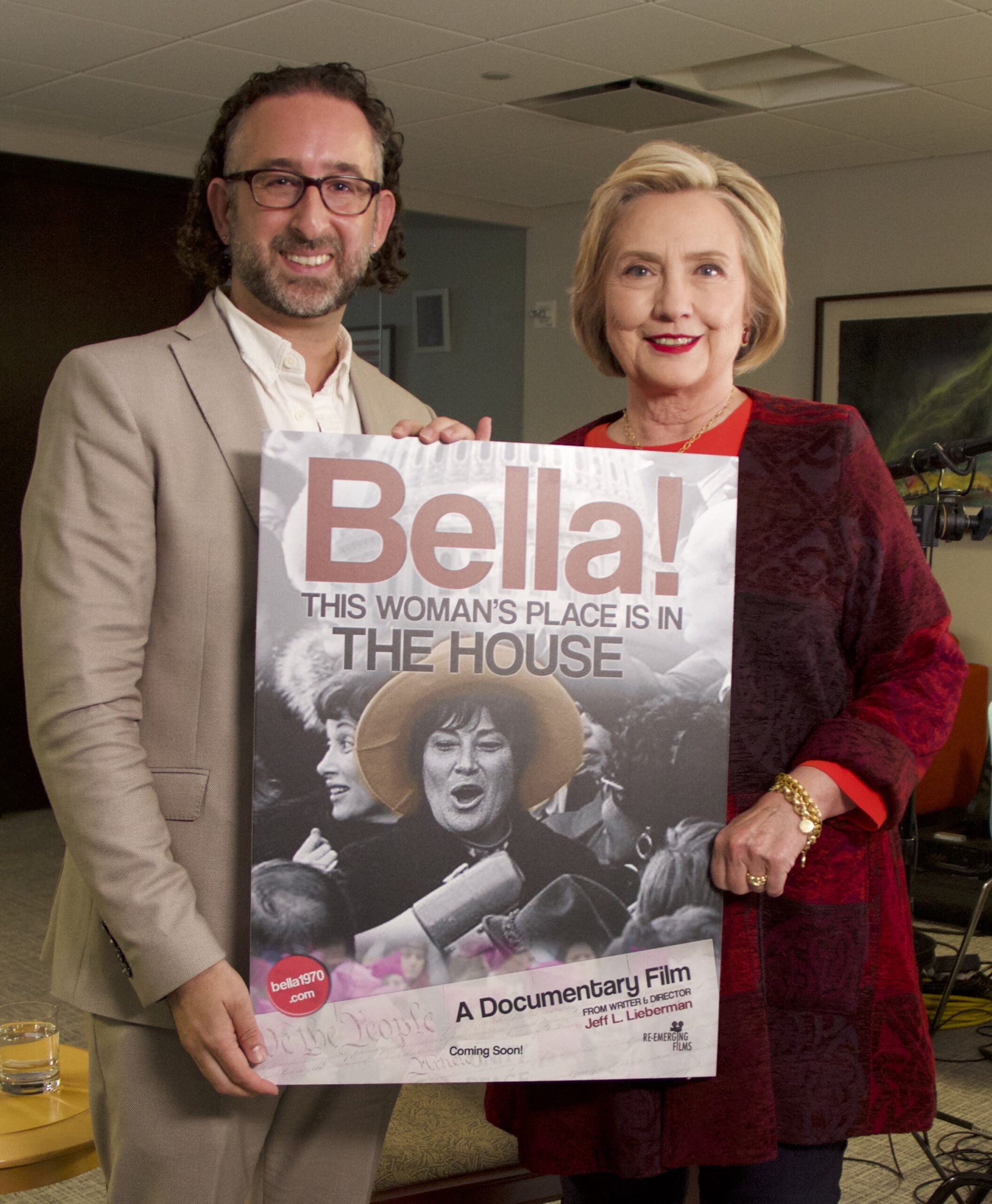Bella! This Woman’s Place is in THE HOUSE
A must-see documentary film by Jeff L. Lieberman.

Watching the documentary on Congresswoman Bella S. Abzug (D-NY): Bella! This woman’s place is in THE HOUSE, brought back so many great memories for me. I had to watch it twice to separate my personal feelings about Bella, having worked for her, and become her friend; to imagine what others would see who didn’t know her, and her life. Both viewings were great. Jeff L. Lieberman, writer, and Director, has brought Bella to life for everyone.
Lieberman tells the story of a passionate, courageous, brilliant, woman; one who made a real difference in all women’s lives. But more than that, she made a difference in everyone’s life; men, women, minorities, and the LGBTQ+ community. Bella was a true force of nature. Using pictures and video from her younger years, Lieberman makes Bella come alive. Pictures of her mom and dad; and those with the love of her life, her husband Martin. Interviews with her daughters Eve, and Liz, helped tell her personal story. He brought out a side of her not everyone saw, delving into how in her younger years the experiences she had formed her life’s goals. Bella was all about fairness and decency. Bella was a leader and people followed.
Yes, many called her ‘a tough broad.’ She brooked no nonsense or weakness, in herself, and others. She was tough on her staff and those around her, but no tougher than she was on herself. Yes, Bella was loud. She could yell at her staff, other politicians, and even constituents; but she was also the Jewish mother, and many called her Mother Earth.
The film shows the influence of her orthodox Jewish family. How when she said Kaddish for her father after he died when she was just thirteen, she was relegated to the women’s balcony of the shul. It was something she fought against all her life. Bella went to Hunter College and wanted to go to Harvard Law School. At the time Harvard didn’t take women, or Jews. So, she went to Columbia University Law School. She formed her own firm when she graduated. She started wearing hats when she realized that was how she would be seen as a professional, not a secretary, and wore them all her life. They became her trademark. As a young lawyer she went to Mississippi to fight for the life of a Black man who had been sentenced to death for a crime she didn’t believe he committed. She would sleep in a bus station because when people found out she was his lawyer, they wouldn’t rent her a hotel room. She worked so hard she had a miscarriage, but never-the-less kept fighting for him, though eventually he was executed. That experience, and others, portrayed in the film, simply drove her to fight even harder for fairness for all. For civil rights and for the rights of all minorities, including the LGBTQ+ community. Not everyone in the LGBTQ+ community knows it was Bella who introduced the first Equality Act bill in 1974. A bill still not passed today. Bella was ahead of her time in so many ways, and Lieberman shows that in this film.
There is a funny story in the film about House of Representatives, Sargeant at Arms, Fishbait Miller, telling Bella to take her hat off when she entered the House Chamber. The rumor had it she told him politely to “Go fuck yourself.” Bella denied it. But many years later I sat with him at a dinner party and he confirmed it. Laughing, he said he ended up liking and respecting her.
Lieberman’s film portrays Bella’s tenacity in Congress, standing up to the powers that be. Her fight against the CIA and FBI; and fighting to impeach Nixon. Bella was a founder of Women’s Strike for Peace, and there is a focus on her fight against the Viet Nam war, and for a ban on nuclear testing.
The film follows her campaigns, from the first winning one in 1970, where she came up with the slogan, now the basis for the title of this film, “A woman’s place is in the House, the House of Representatives”. Then her fight to keep her seat in 1972 after she was redistricted. He follows her losing race in 1976 to Patrick Moynihan, in the US Senate primary, by only a whisker. They her continued losses first in 1977 for Mayor of New York City, then for Ed Koch’s old seat on New York’s Eastside; and finally, a losing race for Congress in Westchester County. She wanted to get back into Congress but never did. But even when she lost, Lieberman shows us how she never stopped fighting for people and change. She ran the Women’s Conference in Houston in 1977, and went to China for the International Women’s Conference in 1995. That was where Hillary Clinton declared, “Women’s Rights, are Human Rights,” even though by that time Bella was in a wheelchair.
Lieberman brings Bella’s life to us in the fullest way with a host of women, and some men, who speak about her, and what she meant to them. They include Barbra Streisand, Gloria Steinem, Hillary Clinton, Shirley McLaine, Nancy Pelosi, Maxine Waters, Marlo Thomas and Phil Donahue, and Renee Taylor and Joe Bologna, among others. Former staffers, and community activists, who talk about what she meant to them and what she accomplished. He reminds us Bella was named a whip by Tip O’Neil in her third term, because she got things done. Bella got the bill passed that allowed women to get their own credit cards. She is responsible for all those curb cuts on our streets. She broke the highway trust fund allowing states and cities to get funding for mass transit. She was not only loud, and a fighter; she was tremendously successful.
Bella! This woman’s place is in THE HOUSE will be at the DCJCC for three nights; March 14th, 17th, and 18th. Tickets will go fast and they are available online. I would urge every woman, every member of the LGBTQ+ community, and everyone who cares about peace in the world, to see this film. You will not only learn about a great woman, but seeing it may just give you that push to go out and fight for your own rights. Even more, to emulate Bella, and fight for a better world.





